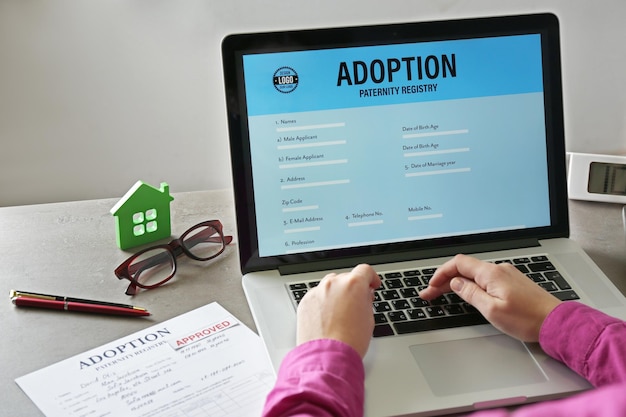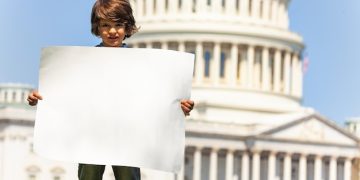Student Loan Forgiveness: A Comprehensive Guide to Eligibility and Options

Student loan forgiveness programs offer various pathways for eligible borrowers in the US to reduce or eliminate their student loan debt, easing financial burdens and promoting economic stability.
Navigating the landscape of student loan forgiveness programs can feel overwhelming. This guide breaks down current options, eligibility criteria, and how to determine if you qualify for relief.
Understanding Student Loan Forgiveness Programs
Student loan forgiveness is a process where borrowers can have all or a portion of their federal student loans canceled. These programs are designed to alleviate the burden of student debt for individuals who meet specific requirements, such as working in public service or teaching in low-income schools.
Numerous programs exist, each with unique criteria and application processes. Understanding these options is the first step in determining your eligibility.
Types of Forgiveness Programs
There are several types of student loan forgiveness programs available to borrowers in the United States. These programs can be broadly categorized into federal programs, which are offered by the US Department of Education, and state-specific programs, which vary by location.
- Public Service Loan Forgiveness (PSLF): For those employed by government organizations or non-profits.
- Teacher Loan Forgiveness: Available to teachers who work in low-income schools for a specified number of years.
- Income-Driven Repayment (IDR) Forgiveness: After making payments for a set period under an IDR plan.

Each program has specific qualifications and requirements that borrowers must meet to be eligible. Carefully reviewing these criteria is essential before applying.
In conclusion, student loan forgiveness programs offer various options for borrowers to manage and potentially eliminate their student debt. Understanding the different types of programs and their respective requirements is crucial for determining the best path to financial relief.
Public Service Loan Forgiveness (PSLF) Explained
The Public Service Loan Forgiveness (PSLF) program is designed to encourage individuals to enter and remain in public service jobs. It offers the potential to have outstanding federal student loan debt forgiven after making 120 qualifying monthly payments while working full-time for a qualifying employer.
This program is a significant benefit for those committed to serving their communities and the country.
Qualifying Employment
To qualify for PSLF, you must be employed full-time by a qualifying employer. These employers typically include:
- Government organizations at any level (federal, state, local, or tribal).
- Non-profit organizations that are tax-exempt under Section 501(c)(3) of the Internal Revenue Code.
- Other types of non-profit organizations that provide certain public services.
Not all non-profit organizations qualify, so it’s important to verify your employer’s eligibility.
Eligible Loans and Payment Plans
Only federal Direct Loans are eligible for PSLF. If you have other types of federal student loans, such as FFEL loans or Perkins Loans, you may need to consolidate them into a Direct Consolidation Loan to qualify. Additionally, you must make your 120 qualifying payments under an income-driven repayment (IDR) plan.
- Verify that your loans qualify as Direct Loans.
- Consider consolidating non-Direct Loans into a Direct Consolidation Loan.
- Enroll in an income-driven repayment plan to ensure your payments qualify.
In summary, the Public Service Loan Forgiveness program provides a valuable opportunity for those working in public service to alleviate their student loan debt. Ensuring your employment, loans, and payment plans meet the program’s requirements is crucial for successful participation.

Teacher Loan Forgiveness: Serving the Next Generation
The Teacher Loan Forgiveness program is tailored for teachers who dedicate themselves to serving students in low-income schools. This program offers loan forgiveness to eligible teachers who have taught full-time for five consecutive academic years in a qualifying elementary or secondary school.
This initiative aims to attract and retain talented educators in areas where they are needed most.
Eligibility Requirements
To be eligible for Teacher Loan Forgiveness, you must meet several requirements:
- Have been employed as a full-time teacher for five complete and consecutive academic years.
- Teach in a qualifying elementary or secondary school that serves low-income students.
- Have eligible federal student loans, such as Direct Loans or Federal Stafford Loans.
The school’s low-income designation is determined annually by the US Department of Education.
The Teacher Loan Forgiveness program provides much-needed financial relief to educators who commit to teaching in low-income schools. Meeting the eligibility requirements and completing the application process are essential steps to benefit from this program.
Income-Driven Repayment (IDR) Forgiveness: A Path to Affordability
Income-Driven Repayment (IDR) plans are designed to make student loan payments more affordable by basing them on your income and family size. These plans also offer the potential for loan forgiveness after a specified repayment period, typically 20 or 25 years, depending on the plan.
IDR plans can provide a safety net for borrowers facing financial hardship.
Different IDR Plans
Several IDR plans are available, each with its own eligibility criteria and repayment terms:
- Income-Based Repayment (IBR): Caps monthly payments at a percentage of your discretionary income.
- Pay As You Earn (PAYE): Generally has lower monthly payments compared to IBR.
- Revised Pay As You Earn (REPAYE): Similar to PAYE but includes some additional benefits and requirements.
Choosing the right plan depends on your individual financial situation and loan type.
Forgiveness Timeline and Tax Implications
After making payments under an IDR plan for 20 or 25 years, the remaining loan balance may be forgiven. However, it’s important to note that the forgiven amount may be subject to income tax. Therefore, borrowers should consider the potential tax implications of IDR forgiveness.
- Understand the forgiveness timeline for your specific IDR plan.
- Consult with a tax professional to discuss potential tax liabilities.
- Keep accurate records of your payments and income information.
In conclusion, Income-Driven Repayment plans offer a viable option for borrowers seeking affordable monthly payments and potential loan forgiveness. Understanding the different IDR plans, their eligibility requirements, and the tax implications is crucial for making informed decisions about your student loan repayment strategy.
Other Forgiveness Programs and Options
Beyond the well-known programs like PSLF, Teacher Loan Forgiveness, and IDR forgiveness, other specialized programs can provide student loan relief. These programs often cater to specific professions or circumstances.
Exploring these options can uncover additional pathways to managing your student debt.
Nurse Corps Loan Repayment Program
The Nurse Corps Loan Repayment Program offers registered nurses, advanced practice registered nurses, and nurse faculty members the opportunity to receive loan repayment assistance in exchange for service in critical shortage facilities or eligible nursing schools. Participants can receive up to 85% of their unpaid nursing student loans in exchange for a two- or three-year service commitment.
To qualify, nurses must work full-time at a qualifying facility or school, possess a valid nursing license, and have outstanding qualifying student loans. This program not only helps alleviate student debt but also addresses critical healthcare workforce shortages.
Closed School Discharge
If your school closes while you are enrolled or shortly after you withdraw, you may be eligible for a closed school discharge. This program allows you to have your federal student loans discharged if the school you attended closes before you could complete your program of study.
- You did not complete your program because the school closed.
- You were enrolled at the school when it closed or withdrew within 120 days of the closure.
- You have not completed your program at another school.
In summary, exploring alternative student loan forgiveness programs can open up additional opportunities for borrowers in specific professions or circumstances. Carefully researching these programs and ensuring you meet the eligibility criteria can provide significant financial relief.
Navigating the Application Process
Applying for student loan forgiveness can seem daunting, but understanding the application process for each program can simplify the process and increase your chances of approval. Each program has its own set of forms, deadlines, and supporting documentation requirements.
Preparation is key to a successful application.
Gathering Required Documentation
- Loan documentation
- Employment verification
- Income information
Having these documents readily available will streamline the application process and prevent delays.
Common Mistakes to Avoid
Several common mistakes can lead to application denials or delays.
- Submitting incomplete or inaccurate information
- Missing deadlines
- Failing to meet eligibility requirements
Double-checking your application and ensuring you meet all requirements can help you avoid these pitfalls.
Staying Informed and Seeking Guidance
The landscape of student loan forgiveness programs can change frequently. Staying informed about the latest updates, policy changes, and program requirements is essential for making informed decisions about your student loans. Regularly checking official sources, such as the US Department of Education website, and consulting with reputable financial advisors can help you navigate this complex terrain.
Knowledge is power when it comes to managing student debt.
Resources for Borrowers
Several valuable resources are available to help borrowers understand their options and navigate the student loan process.
- The US Department of Education Website
- Loan servicer websites
- Non-profit credit counseling agencies
These resources can provide valuable information, tools, and support to help you make informed decisions.
The Role of Financial Advisors
Financial advisors can provide personalized guidance and support to help you develop a student loan repayment strategy that aligns with your financial goals. They can assess your individual circumstances, evaluate your eligibility for different loan forgiveness programs, and help you navigate the application process.
To conclude, staying informed about the ongoing changes in student loan forgiveness programs and seeking guidance from trusted resources and financial advisors can empower you to make informed decisions about your student loans. Keeping abreast of policy updates and seeking professional advice can significantly enhance your ability to manage your debt effectively and achieve your financial goals.
| Key Point | Brief Description |
|---|---|
| ✅ PSLF Eligibility | Work full-time for a qualifying employer and make 120 qualifying payments. |
| 👩🏫 Teacher Forgiveness | Teach full-time for five years in a low-income school. |
| 💰 IDR Plans | Payments based on income; forgiveness after 20-25 years. |
| ❗ Documentation | Gather all required loan and employment documents for application. |
Frequently Asked Questions (FAQ)
▼
PSLF forgives the remaining balance on your Direct Loans after you’ve made 120 qualifying monthly payments while working full-time for a qualifying employer, such as a government organization or non-profit.
▼
Qualifying employers include government organizations (federal, state, local, or tribal) and non-profit organizations that are tax-exempt under Section 501(c)(3) of the Internal Revenue Code.
▼
IDR plans are designed to make your student loan payments more affordable by basing them on your income and family size. They also offer forgiveness after a set period, typically 20 or 25 years.
▼
Yes, you may be eligible for a closed school discharge if your school closed while you were enrolled or shortly after you withdrew, preventing you from completing your program of study.
▼
You can find more information on the US Department of Education website, your loan servicer’s website, and through non-profit credit counseling agencies that offer free or low-cost assistance.
Conclusion
Understanding the available student loan forgiveness programs and determining your eligibility is a critical step towards managing your student debt effectively. By exploring different options, staying informed about program requirements, and seeking professional guidance when needed, you can navigate the often-complex landscape of student loan relief and work towards a more secure financial future.





